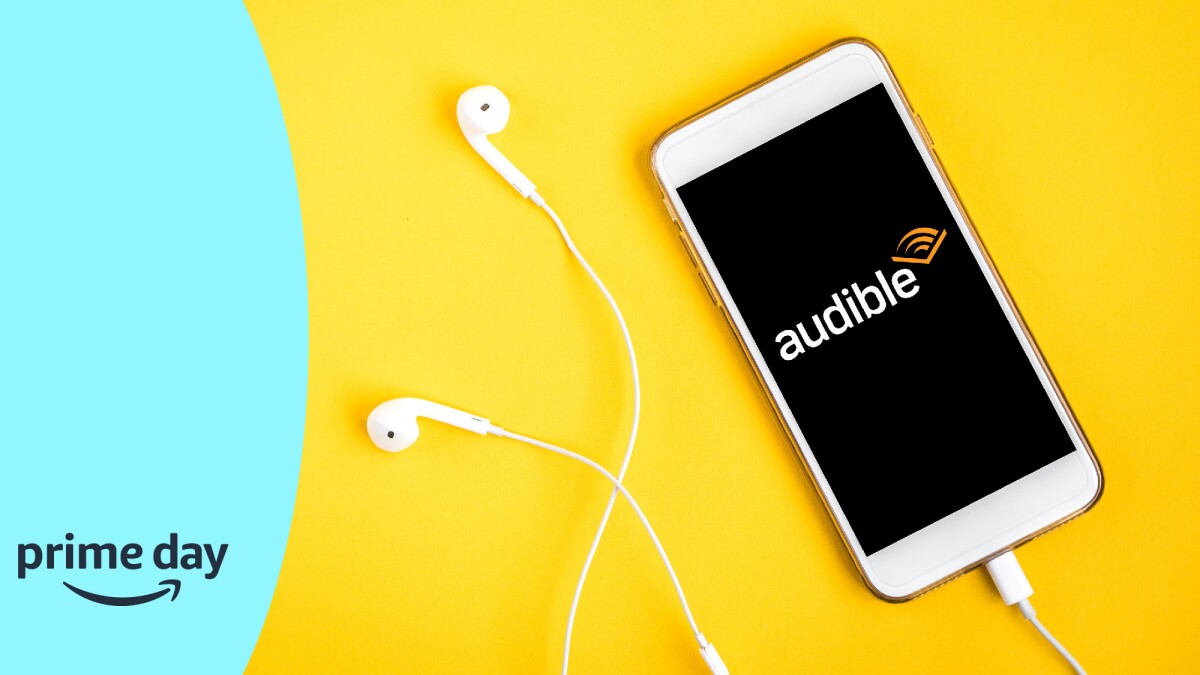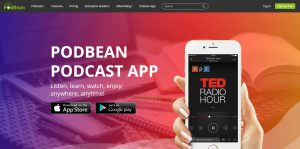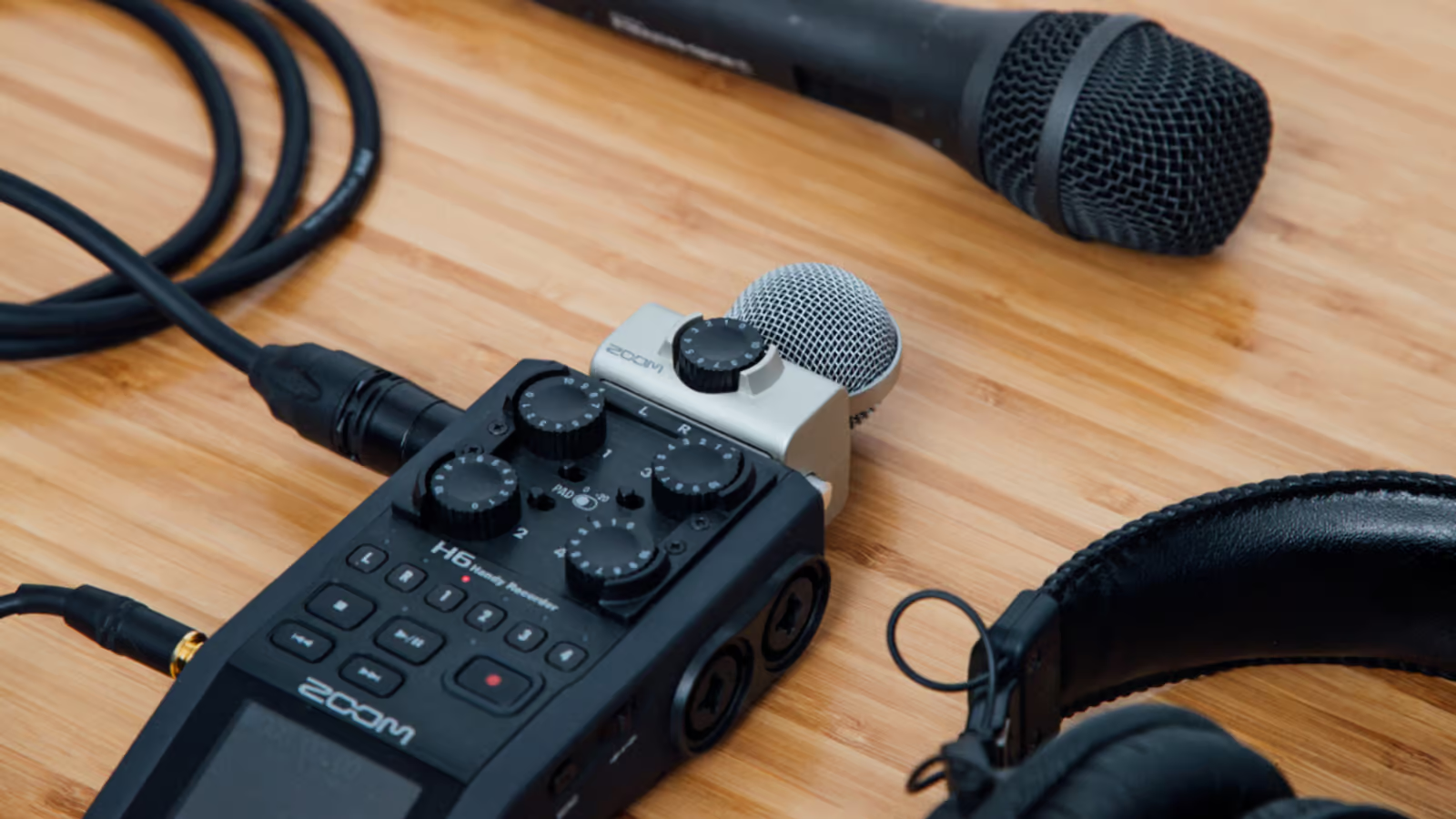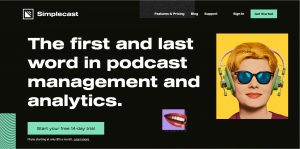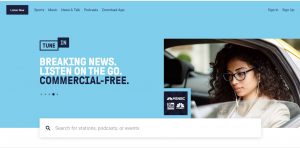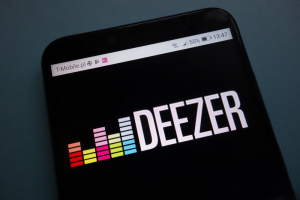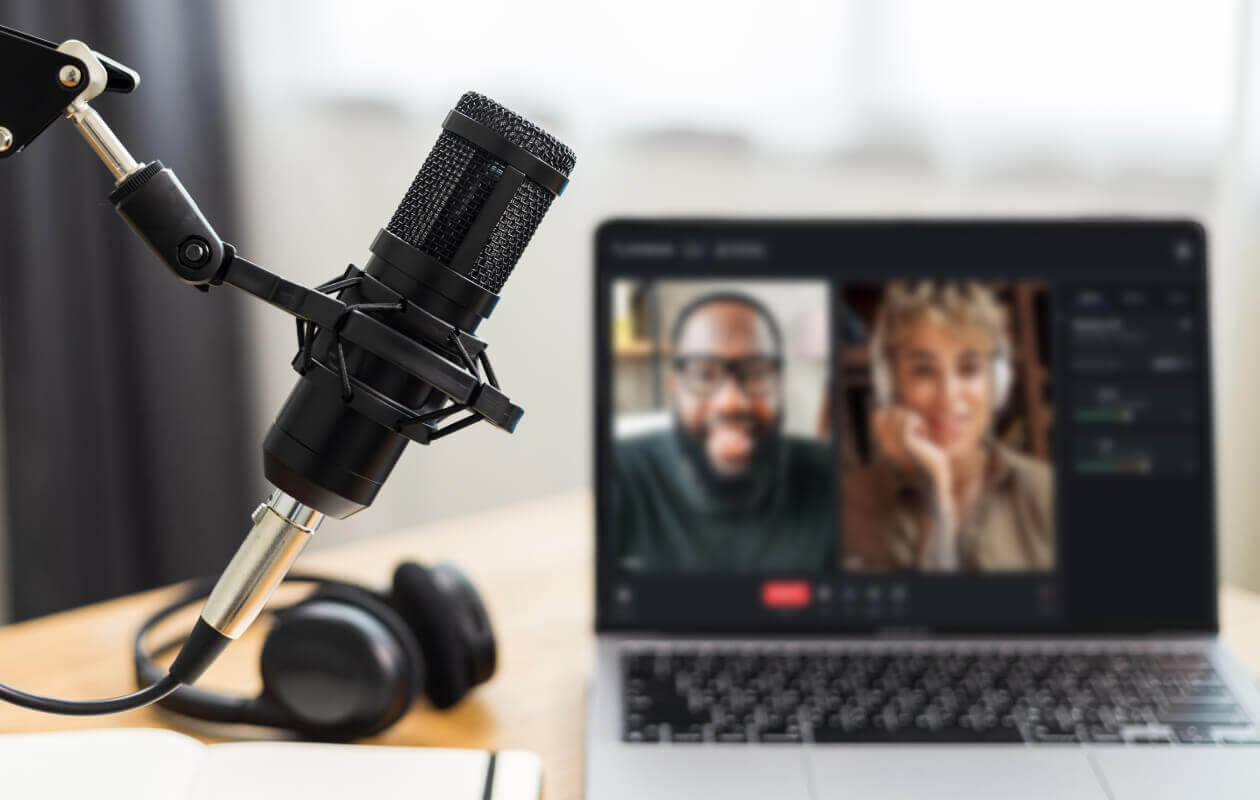Finding the Perfect Podcast Equipment
Starting a podcast requires careful consideration and planning, especially when it comes to selecting the right equipment. Having high-quality podcast equipment is essential for producing professional-sounding audio and creating a memorable listening experience for your audience. Here are some key factors to consider when searching for the perfect podcast equipment:
Researching and Purchasing a Microphone: The microphone is one of the most critical pieces of podcasting equipment. It’s essential to choose a microphone that suits your needs and budget. There are various types of microphones available, including USB microphones, dynamic microphones, and condenser microphones. Each type has its pros and cons, so research thoroughly to determine which one will best meet your requirements.
Choosing a Mixer or Audio Interface: A mixer or audio interface is necessary for connecting your microphone to your computer or recording device. It enables you to control the audio levels and add effects if desired. The choice between a mixer and an audio interface depends on your specific needs. Mixers offer more control and flexibility, while audio interfaces are simpler to set up and use.
Selecting Recording Software: Recording software is an important component of your podcast setup. There are numerous options available, both free and paid, that offer various features and capabilities. Some popular recording software options include Audacity, Adobe Audition, GarageBand, and Reaper. Consider your budget, technical proficiency, and desired functionality when choosing the software that’s right for you.
Investing in Headphones: Quality headphones are crucial for monitoring audio while recording and editing your podcast. Closed-back headphones are recommended as they provide better sound isolation, preventing audio leakage into the microphone. Look for headphones that offer a flat frequency response to ensure accurate audio monitoring.
Acquiring a Pop Filter and Boom Arm: A pop filter is a screen placed in front of your microphone to reduce plosive sounds caused by strong bursts of air. It helps ensure clear and crisp audio. Additionally, a boom arm is beneficial for holding your microphone securely in place, allowing for easy positioning and eliminating any handling noise.
Setting Up a Podcast Studio Space: Creating a dedicated podcast studio space can help optimize your recording environment. Find a quiet location with minimal background noise and consider incorporating soundproofing elements like foam panels or acoustic curtains. Additionally, arranging your equipment and optimizing the room layout will contribute to a more professional and organized podcasting setup.
Investing in high-quality podcast equipment plays a significant role in the success of your podcast. Taking the time to research and select the right equipment for your needs will result in excellent audio quality and a polished podcasting experience for your audience.
Researching and Purchasing a Microphone
When starting a podcast, one of the most crucial decisions you’ll make is selecting the right microphone. The microphone you choose will heavily impact the audio quality and overall listening experience. Here’s a comprehensive guide to help you research and purchase the perfect microphone for your podcast:
Determine Your Budget: Before diving into the myriad of microphone options available, it’s essential to establish your budget. Microphones can range from budget-friendly options to high-end professional-grade ones. Understanding your financial constraints will help narrow down your choices and ensure you make a financially sound decision.
Consider Your Recording Environment: The recording environment plays a significant role in the type of microphone you should choose. Dynamic microphones are excellent at minimizing background noise and handling loud sounds, making them ideal for recording in noisy environments. On the other hand, condenser microphones offer superior audio quality and sensitivity, making them perfect for controlled recording conditions.
Understand Different Microphone Types: USB microphones, dynamic microphones, and condenser microphones are the most common options for podcasters. USB microphones are plug-and-play and offer convenience, making them suitable for beginners. Dynamic microphones are durable and versatile, making them a popular choice for podcasting. Condenser microphones are more sensitive and deliver exceptional audio quality but require additional power and careful handling.
Read Reviews and Seek Recommendations: Take the time to read reviews and seek recommendations from other podcasters or audio professionals. Online forums and podcasting communities are great places to gather insights on different microphone models and their performance. Different perspectives and experiences can help you make an informed decision.
Test Before Purchasing: Whenever possible, try to test out different microphones before making a purchase. Many electronics and music stores have demonstration models available for testing. This hands-on experience will give you a better understanding of how a microphone sounds and feels, helping you make a more informed decision.
Consider Additional Accessories: Alongside the microphone, there are a few additional accessories you may need. These include microphone stands, shock mounts, and windshields. Stands and shock mounts provide stability and isolate the microphone from vibrations, while windshields minimize the impact of plosive sounds caused by air blasts.
Research Warranty and Customer Support: Before finalizing your purchase, research the warranty and customer support offered by the microphone manufacturer. A good warranty will protect your investment and provide peace of mind. Additionally, responsive and helpful customer support can assist you with any troubleshooting or inquiries you may have.
Choosing the right microphone for your podcast is essential for delivering professional-quality audio. By thoroughly researching different options, considering your budget and recording environment, and seeking recommendations, you’ll be well-equipped to make an informed decision and find the perfect microphone for your podcasting needs.
Choosing a Mixer or Audio Interface
When setting up a podcast, one key decision you’ll need to make is whether to use a mixer or an audio interface. Both options serve the purpose of connecting your microphone to your computer or recording device, but they have distinct differences. Here’s a guide to help you choose between a mixer or an audio interface for your podcasting needs:
Mixer: A mixer is a device that allows you to control multiple audio inputs, adjust levels, and add effects, making it a versatile tool for podcasters. If you plan to have guests or incorporate additional audio sources like music or sound effects, a mixer can provide the flexibility to manage all those inputs simultaneously. Mixers come in various sizes, ranging from compact portable models to larger, more complex setups.
Audio Interface: An audio interface is a simpler device that focuses solely on converting analog audio signals from your microphone into digital signals that your computer can process. It typically offers fewer inputs and controls compared to a mixer. Audio interfaces are straightforward to set up and usually connect directly to your computer via USB or Thunderbolt. They are an excellent option for podcasters who primarily work with solo or remote recording setups.
Consider Your Podcast’s Needs: Start by evaluating your podcast’s requirements. If you plan to have multiple hosts or guests and want to control their audio levels independently, a mixer may be the better choice. On the other hand, if you’re primarily recording solo or remotely, an audio interface will likely suffice. Think about your current and future podcasting plans to ensure that you select a device that can grow with your needs.
Budgetary Considerations: Budget is an essential factor when choosing between a mixer and an audio interface. Mixers generally come with a higher price tag due to their additional features and capabilities. Audio interfaces, on the other hand, tend to be more cost-effective and offer a simpler solution for podcasters on a tighter budget. Carefully consider your financial constraints and weigh them against the features you require.
Level of Technical Expertise: Another aspect to consider is your level of technical expertise. Mixers often require a certain level of understanding to operate effectively, as they offer more control and a steeper learning curve. Audio interfaces, on the other hand, are generally more user-friendly and require minimal technical knowledge. If you’re new to podcasting or prefer a straightforward setup, an audio interface may be the more suitable option.
Compatibility and Software: It’s crucial to ensure that the mixer or audio interface you choose is compatible with your computer and recording software. Most devices are designed to work on both Mac and PC platforms, but it’s always a good idea to double-check. Additionally, consider any specific software requirements or integrations you may need for your podcasting workflow.
Ultimately, the decision between a mixer and an audio interface depends on your specific podcasting needs, budget, technical expertise, and future growth plans. Evaluating these factors will help you make an informed decision and select the device that best suits your podcasting setup.
Selecting Recording Software
Recording software is a vital component of your podcasting setup as it allows you to capture and edit your audio. Choosing the right recording software can significantly impact the quality and efficiency of your podcast production process. Here are some key considerations to keep in mind when selecting recording software:
Features and Functionality: Start by evaluating the features and functionality you require for your podcast. Consider whether you need basic recording and editing capabilities or if you require more advanced features like multi-track recording, sound effects, EQ controls, or noise reduction. Look for software that provides the necessary tools to meet your podcasting goals.
User-Friendliness: Consider your level of technical expertise and the ease of use. If you’re new to podcasting or recording software, opt for software with a user-friendly interface and intuitive controls. Look for clear instructions and helpful support resources that can assist you in getting started and troubleshooting any issues that may arise.
Compatibility: Ensure that the recording software you choose is compatible with your computer’s operating system. Most software supports both Mac and PC platforms, but it’s always best to double-check. Additionally, consider compatibility with your recording equipment, such as microphones and audio interfaces, to ensure seamless integration.
Cost Considerations: Recording software comes in both free and paid options, each with its own set of features. Determine your budget and evaluate whether the additional features offered by paid software justify the cost. There are several reputable free recording software options available, such as Audacity and GarageBand, which can be suitable for podcasters on a tight budget.
Community Support and Updates: Consider the availability of a supportive user community and regular software updates. Look for software that has an active user base where you can seek help, share experiences, and learn from others. Additionally, regular software updates ensure that you have access to the latest features and improvements.
Integration with Editing Software: If you plan to edit your podcast episodes separately, consider how the recording software integrates with your chosen editing software. Ensure that the file formats are compatible and that transferring audio files between the two programs is seamless.
Read Reviews and Seek Recommendations: Take the time to read reviews and seek recommendations from other podcasters who have experience with different recording software. Their insights and experiences can provide valuable information and guide you in making an informed decision.
Remember, the recording software you choose should align with your podcasting goals, technical expertise, and budget. By considering the features and functionality, user-friendliness, compatibility, cost, community support, and integration options, you’ll be able to select recording software that meets your needs and enhances your podcasting process.
Investing in Headphones
When it comes to podcasting, having quality headphones is essential for monitoring your audio during recording and editing. The right pair of headphones can make a significant difference in the overall sound quality and help ensure that your final podcast episodes sound polished and professional. Here are some key factors to consider when investing in headphones for podcasting:
Closed-Back Headphones: Closed-back headphones are recommended for podcasting purposes. They are designed to provide better sound isolation, preventing audio leakage into the microphone. This is important because it helps ensure that the only audio captured is from the sources you intend, resulting in better clarity and control over your recording.
Flat Frequency Response: Look for headphones that offer a flat frequency response. This means that the headphones reproduce audio as accurately as possible without adding any unnecessary coloration or distortions. Flat frequency response allows you to hear your recordings as they truly sound, enabling you to make precise adjustments during the editing process.
Comfort and Durability: Since podcasting often involves extended periods of wearing headphones, comfort is vital. Look for headphones with adjustable headbands, padded ear cups, and lightweight designs. Additionally, consider the build quality and durability of the headphones to ensure they can withstand frequent use without deteriorating in performance or comfort.
Wired vs. Wireless: Consider whether you prefer wired or wireless headphones. Wired headphones offer a consistent and reliable connection, eliminating concerns about battery life. On the other hand, wireless headphones provide freedom of movement and convenience. However, ensure that the wireless headphones have low latency to avoid any audio delays during recording or editing.
Additional Features: Some headphones offer additional features that may enhance your podcasting experience. This could include in-line volume controls, detachable cables for easy replacement, or foldable designs for portability. Consider these additional features based on your specific needs and preferences.
Budget: Set a budget for your headphone investment. There are headphones available in a wide range of price points, from budget-friendly options to high-end professional-grade models. Take into account your podcasting goals, audio quality requirements, and budget constraints when making your decision.
Read Reviews and Test Before Buying: Before making a purchase, read reviews from other podcasters and audio professionals to get insights into the performance and durability of the headphones you’re considering. Whenever possible, test the headphones yourself to ensure that they provide the sound quality and comfort you’re looking for.
Investing in high-quality headphones is a wise decision for any podcaster. By considering factors such as closed-back design, flat frequency response, comfort and durability, wired or wireless options, additional features, budget, and reading reviews, you can find the perfect pair of headphones that will enhance your podcasting experience and contribute to professional-sounding audio.
Acquiring a Pop Filter and Boom Arm
When setting up your podcasting studio, there are a few essential accessories that can greatly improve the quality of your recordings. Two such accessories are a pop filter and a boom arm. Let’s take a closer look at why they are important and how to choose the right ones for your podcasting setup:
Pop Filter: A pop filter is a mesh screen that is placed in front of your microphone to minimize plosive sounds caused by bursts of air hitting the microphone capsule. Plosive sounds often occur when pronouncing certain consonant sounds, such as “p” and “b”. The pop filter acts as a barrier, dispersing the airflow and softening the impact on the microphone. This helps ensure clear and crisp audio quality during recording.
When selecting a pop filter, consider the size and material of the screen. The screen should be large enough to cover the entire microphone diaphragm but not obstruct your view or impede your performance. Look for a durable material, such as nylon, that effectively diffuses the airflow while allowing the sound to pass through unhindered.
Boom Arm: A boom arm is an adjustable arm that holds your microphone securely in place. It allows you to position the microphone at the optimal distance and angle for recording. A boom arm helps eliminate the need to physically hold the microphone, reducing handling noise and providing a more comfortable recording experience.
When choosing a boom arm, consider the length, adjustability, and stability. Opt for a boom arm that can extend to your preferred range and has a sturdy construction to prevent any unwanted movement or sagging. Look for features such as internal cable management to keep your setup organized and clutter-free.
Compatibility: Ensure that the pop filter and boom arm you choose are compatible with your microphone. Most pop filters attach easily using a clamp or gooseneck design, allowing them to fit a wide range of microphones. Boom arms typically have standard microphone mount sizes, such as 5/8″ or 3/8″, but it’s important to check the specifications to ensure a proper fit.
Consider Your Workspace: Take into account the space you have available in your podcasting studio. A boom arm can help maximize desk space by keeping the microphone elevated and out of the way when not in use. Additionally, ensure that the boom arm can securely attach to your desk or studio setup without causing damage or instability.
Both a pop filter and a boom arm are valuable additions to your podcasting setup. The pop filter minimizes plosive sounds and ensures clear audio, while the boom arm provides convenience and stability for optimal microphone positioning. By selecting a high-quality pop filter and a suitable boom arm that are compatible with your microphone and studio space, you can elevate the quality of your recordings and enhance your overall podcasting experience.
Setting Up a Podcast Studio Space
Creating a dedicated podcast studio space is essential for optimizing your recording environment and ensuring the best possible audio quality. Whether you have a dedicated room or a small corner in your home, here are some key considerations for setting up your podcast studio space:
Choose a Quiet Location: Select a location that is as quiet as possible. Avoid rooms with excessive background noise or near busy areas in your home. Look for a space away from appliances, air vents, or other sources of unwanted noise. Consider soundproofing measures, such as adding acoustic panels or curtains, to minimize external noise interference.
Consider Room Acoustics: The acoustics of the room can greatly impact the sound quality of your recordings. Large, empty rooms with hard surfaces can lead to echo and reverb, while small, cramped spaces can feel claustrophobic. Experiment with the placement of furniture, rugs, and curtains to help control reflections and create a more balanced and pleasing acoustic environment.
Arrange your Equipment: Organize your podcasting equipment in an ergonomic and efficient manner. Keep your microphone, headphones, and other essential tools within reach for easy access during recording sessions. Use cable management solutions to keep your cables tidy and avoid any accidental tripping hazards.
Optimize Lighting: Good lighting can enhance the visual appeal of your podcasting space. Consider using natural lighting whenever possible by positioning your studio near a window. If natural lighting is limited, invest in studio lights or desk lamps to provide adequate illumination. Aim for a well-lit space that is free from harsh shadows that could affect video recordings or live streams.
Minimize Reflections: Reflective surfaces, such as glass or mirrors, can create unwanted reflections in your audio recordings. Place foam panels or acoustic treatment strategically to minimize reflections and create a more controlled recording environment. Experiment with the placement of these panels to achieve the best sound quality for your space.
Ensure Proper Ventilation: Recording sessions can get warm, especially if you’re using studio lights or have multiple people in the room. Ensure that your podcast studio space has proper ventilation to prevent overheating and discomfort during long recording sessions. Consider using a fan or opening windows to maintain a comfortable temperature.
Personalize Your Space: Make your podcast studio space your own by adding personal touches and branding elements. Hang artwork, display your podcast logo or name on the walls, or include any items that inspire you and reflect the essence of your podcast. Creating a comfortable and inspiring environment will contribute to your enthusiasm and creativity during recording sessions.
Maintain a Neat and Organized Space: Keeping your podcast studio space clean and organized will contribute to a more professional and focused atmosphere. Regularly declutter your space, remove any unnecessary items, and ensure that cables and equipment are neatly arranged. A well-organized space will not only enhance your workflow but also leave a positive impression on any guests or visitors.
Setting up a podcast studio space requires careful consideration of the location, acoustics, lighting, organization, and aesthetics. By creating a dedicated and optimized space, you’ll enjoy a more professional and enjoyable podcasting experience, resulting in high-quality recordings that captivate your audience.
Understanding Web Hosting and Domain Costs
When launching a podcast, having a website can be a valuable tool for promoting your show, providing additional resources, and connecting with your audience. However, it’s important to understand the costs associated with web hosting and domain registration. Here’s a breakdown of these expenses:
Web Hosting: Web hosting is a service that allows you to store and publish your website’s files on a server accessible through the internet. When selecting a web hosting provider, consider factors such as reliability, customer support, bandwidth, storage, and scalability. The cost of web hosting varies depending on the provider and the hosting package you choose. Shared hosting plans, where your website shares server resources with other websites, tend to be more affordable, while dedicated hosting plans, where you have dedicated server resources, can be more expensive.
Domain Registration: A domain name is your website’s address on the internet, such as www.yourpodcast.com. The cost of domain registration varies depending on the domain extension (.com, .net, .org, etc.) and the domain registrar you choose. Typically, registering a domain for one year is the minimum requirement, but you can also opt for longer registration periods. Some web hosting providers offer free domain registration as part of their hosting packages, while others may charge a separate fee for domain registration.
Renewal Fees: Both web hosting and domain registration require renewal fees to keep your website and domain active. Web hosting renewal fees are typically charged on a monthly or annual basis, depending on your chosen billing cycle. Domain renewal fees are usually charged on an annual basis, and the cost may vary depending on the domain registrar you use. It’s essential to keep track of renewal dates and ensure that you renew your hosting and domain in a timely manner to avoid any disruptions to your website.
Add-on Services: Web hosting providers may offer additional services at an extra cost to enhance your website’s functionality and security. These services could include SSL certificates, site backups, malware scanning, website builders, and more. Consider your specific needs and budget when deciding whether to invest in these add-on services.
Comparing Options: Take the time to research and compare different web hosting providers and domain registrars. Consider their reputation, customer reviews, features, technical support, and pricing options. Look for providers that offer reliable uptime, adequate storage and bandwidth, and excellent customer service to ensure a smooth and hassle-free experience for your website.
Future Scalability: As your podcast grows, you may need to consider the scalability of your web hosting and domain services. Look for providers that offer flexible upgrade options, such as VPS (Virtual Private Server) hosting or cloud hosting, to accommodate your increasing traffic and website requirements.
By understanding the costs associated with web hosting and domain registration, comparing different providers, considering add-on services, and planning for future scalability, you can make informed decisions that align with your podcasting goals and budget. Building a professional website for your podcast will contribute to your online presence and audience engagement, ultimately helping you connect with a wider listenership.
Registering a Domain Name
Registering a domain name is a crucial step when creating a website for your podcast. It serves as your unique address on the internet, allowing users to find and access your website. Here’s a guide to help you navigate the process of registering a domain name:
Choosing a Domain Name: Selecting the right domain name is essential. It should be memorable, reflective of your podcast’s brand, and easy to type and spell. Consider incorporating keywords related to your podcast’s topic to improve search engine visibility. Ensure that your domain name does not infringe on any trademarks and is not too similar to existing websites to avoid confusion.
Domain Extensions: The domain extension is the suffix at the end of your domain name, such as .com, .net, .org, or country-specific extensions like .co.uk or .ca. The most common and widely recognized extension is .com, but depending on your podcast’s purpose or location, alternative extensions may be more suitable. Consider the availability, relevance, and professional appeal of the different domain extensions when making your choice.
Domain Registrars: A domain registrar is a company or service that allows you to register and manage your domain name. Research reputable domain registrars that offer competitive pricing, reliable customer support, and a user-friendly registration process. Popular domain registrars include GoDaddy, Namecheap, Google Domains, and Bluehost.
Check Domain Availability: Before finalizing your domain name, it’s essential to check its availability. Domain registrars usually provide a search tool for you to enter your desired domain name and see if it’s already registered. If your desired domain name is unavailable, consider alternative variations or extensions that are still relevant to your podcast’s brand.
Registration Process: Once you’ve found an available domain name, follow the registration process provided by your chosen domain registrar. You’ll typically be asked to create an account, enter your contact information, and complete the necessary payment details. Ensure that all the information you provide is accurate and up-to-date.
Privacy and WHOIS Protection: When registering a domain, you may have the option to protect your personal information through WHOIS privacy. WHOIS is a public database that contains information about domain owners. WHOIS privacy shields your personal details, such as your name, address, and contact information, from being publicly accessible. Consider opting for this privacy protection to maintain your privacy and reduce the risk of spam emails or unsolicited contacts.
Renewal and Management: Domain registration is typically done on an annual basis, so it’s important to keep track of your domain’s renewal date. Most domain registrars provide options to auto-renew your domain or provide reminders when the renewal is approaching. Take necessary steps to ensure that your domain remains active and renewed to avoid any disruption to your website.
Registering a domain name is an important step in establishing your podcast’s online presence. By choosing a relevant and memorable domain name, selecting a reputable domain registrar, and managing your domain effectively through renewal and privacy protection, you can secure a domain that represents your podcast and connects you with your audience.
Comparing Different Web Hosting Options
When selecting a web hosting provider for your podcast’s website, it’s important to compare different options to find the one that best suits your needs. Here are some key factors to consider when comparing web hosting options:
Reliability and Uptime: Look for a web hosting provider that offers reliable uptime. Downtime can negatively impact your website’s accessibility and user experience. Check for guarantees of uptime and research the provider’s reputation for reliability through customer reviews and testimonials.
Bandwidth and Storage: Consider the amount of bandwidth and storage offered by different hosting providers. Bandwidth determines the amount of data that can be transferred from your website to visitors, so ensure it meets your expected traffic requirements. Storage determines the amount of server space available to store your website’s files, so consider the size of your website and any media files you’ll be hosting.
Scalability: As your podcast audience grows, you may need to scale up your hosting resources. Check if the web hosting provider offers flexible scalability options, such as upgrading to higher plans or easily adding additional resources, so your website can accommodate increased traffic and demands without disruption.
Customer Support: Quality customer support is crucial, especially if you encounter technical issues or have questions about your hosting service. Look for providers that offer 24/7 customer support via multiple channels, such as live chat, phone, or email. Prompt and knowledgeable customer support can save you time and frustration when troubleshooting problems.
Security Features: Website security is essential to protect your podcast and your users’ information. Look for web hosting providers that offer robust security features, such as firewalls, SSL certificates, secure file transfer protocol (SFTP), and regular backups. Consider the reputation of the provider for handling security breaches and their track record for addressing any vulnerabilities.
Price and Value: Compare the pricing plans of different hosting providers and assess the value they offer. Consider the features, resources, and level of support included in each plan. Pay attention to any promotional pricing and renewal rates, as some providers may offer discounted rates for the initial term but increase the price upon renewal.
Specialized Features: Depending on your podcast’s goals, you may need specific features from your hosting provider. For example, if you plan to host audio or video files, consider providers that offer support for media streaming. If you require expanded e-commerce capabilities, look for hosting options with built-in shopping cart functionality and secure payment gateways.
Reputation and Reviews: Research the reputation of the web hosting providers you are considering. Look for reviews and feedback from other podcasters or website owners to gauge their experiences. Pay attention to factors such as customer satisfaction, uptime performance, and the provider’s ability to address issues promptly.
By comparing web hosting options based on reliability, bandwidth and storage, scalability, customer support, security features, price and value, specialized features, and reputation, you can make an informed decision and select the hosting provider that best supports your podcast’s website needs.
Selecting an RSS Feed Provider
An RSS (Really Simple Syndication) feed plays a crucial role in distributing your podcast episodes to various podcast platforms and directories. When selecting an RSS feed provider for your podcast, there are several factors to consider. Here’s a guide to help you make an informed decision:
Compatibility: Ensure that the RSS feed provider you choose is compatible with popular podcast platforms and directories, such as Apple Podcasts, Spotify, Google Podcasts, and Stitcher. Compatibility ensures that your podcast episodes can be properly syndicated and accessible to a wide audience.
Ease of Use: Look for an RSS feed provider that offers a user-friendly interface and a straightforward process for uploading and managing your podcast episodes. A simple and intuitive interface will save you time and effort when publishing and updating your podcast episodes.
Podcast Episode Management: Consider the features and functionality for managing your podcast episodes within the RSS feed provider’s platform. Look for options to add episode information, artwork, episode descriptions, show notes, and tags. These features will help improve the presentation and searchability of your podcast episodes.
Statistics and Analytics: Analytics are essential to track the performance of your podcast episodes and monitor audience engagement. Look for an RSS feed provider that offers comprehensive statistics, such as download numbers, subscriber metrics, and geographic data. These analytics will help you understand your audience and make data-driven decisions to improve your podcasting strategy.
Flexibility and Customization: Consider the level of flexibility and customization options offered by the RSS feed provider. Look for providers that allow you to customize the appearance and branding of your podcast feed, including the ability to add your podcast logo, artwork, and personalized episode titles. Customization options help create a consistent and professional image for your podcast.
Reliability and Support: It’s important to choose an RSS feed provider with reliable uptime and responsive customer support. Your RSS feed should be available to podcast platforms and directories at all times, so consider the provider’s track record for uptime and their responsiveness in resolving any issues or inquiries.
Cost and Pricing Structure: Compare the pricing plans and structures of different RSS feed providers. Some providers offer free plans with limited features, while others offer tiered pricing based on the number of podcast episodes or the size of your audience. Assess your podcast’s needs and budget to determine the most cost-effective option.
Integration with Podcasting Platforms: Check if the RSS feed provider has integrations with popular podcasting platforms or podcast hosting services. Integration can streamline your podcasting workflow, allowing for automatic episode updates and synchronization between platforms.
Community and Resources: Consider the presence of a supportive community or access to resources such as documentation, tutorials, and forums. Engaging with a community of fellow podcasters or having access to helpful resources can provide valuable insights, troubleshooting assistance, and networking opportunities.
By considering factors such as compatibility, ease of use, podcast episode management, analytics, flexibility, reliability, cost, integration, and community support, you can select an RSS feed provider that meets your podcasting needs and helps you reach a wider audience with your podcast episodes.
Considering Overall Production Costs
When starting a podcast, it’s essential to consider the overall production costs involved. Understanding and planning for these costs will help you create a realistic budget and ensure a smooth podcasting journey. Here are some key factors to consider when evaluating the overall production costs:
Equipment: Equipment costs are one of the significant expenses in podcast production. This includes microphones, headphones, audio interfaces, mixers, pop filters, boom arms, and other accessories. The prices can vary depending on the quality and features of the equipment you choose. Research thoroughly and consider your budget and podcasting needs when selecting the necessary equipment.
Recording Software: Recording software is another essential investment for your podcast. The cost of recording software can range from free options like Audacity to paid software like Adobe Audition or Reaper. Evaluate the features and capabilities you require, as well as the level of technical expertise needed, to determine the best recording software for your podcasting needs.
Web Hosting and Domain: Costs associated with web hosting and domain registration should be considered. Web hosting expenses depend on the hosting provider and the hosting package you choose, while domain registration costs vary depending on the domain registrar and the duration of registration. Research different options, compare prices, and evaluate the features and services included in each package before making a decision.
Editing Software: Editing software allows you to fine-tune your podcast episodes and create a polished final product. The cost of editing software ranges from free options like Audacity or GarageBand to more advanced paid software like Adobe Audition or Hindenburg Journalist. Consider your editing needs, budget, and level of technical proficiency when selecting the most suitable editing software.
Production Time and Outsourcing: Consider the time and effort required for production. If you decide to outsource tasks such as editing, graphic design, or transcription, remember to include the associated costs in your overall production budget. Assess your own skills, available time, and budget constraints to determine which tasks you may need to outsource to professionals or freelancers.
Marketing and Promotion: Marketing and promotion are crucial for building and growing your podcast’s audience. Consider allocating a portion of your budget for marketing activities such as social media ads, podcast directories, website optimization, and collaborations with other podcasters. Research different marketing strategies, costs, and potential return on investment to make informed decisions.
Additional Expenses: Keep in mind other potential expenses that may arise during the production process. This could include costs for paid music or sound effects, hosting or attending podcasting events or conferences, podcast artwork or branding, podcast transcripts, or professional voice talent fees, if desired. Evaluate the importance and feasibility of these additional expenses based on your budget and podcasting goals.
Tracking and Adjusting: Regularly track and review your production costs to ensure that you stay within budget. As your podcast evolves, your needs and expenses may change. Be flexible and adjust your budget accordingly to accommodate growth and adapt to new opportunities.
Considering the overall production costs is crucial to ensure a sustainable and successful podcasting endeavor. By evaluating equipment, recording, editing, web hosting, outsourcing, marketing, and additional expenses, you can create a comprehensive budget that covers all aspects of your podcast production and helps you create a high-quality show that resonates with your audience.
Planning for Editing and Production Software
Editings software plays a vital role in producing professional-quality podcast episodes. Proper planning and selection of editing and production software are essential to create a polished and engaging listening experience for your audience. Here are some key considerations when planning for editing and production software:
Assess Your Needs: Consider your podcast’s editing and production requirements. Determine the complexity of your episodes and the specific features you need, such as multi-track editing, noise reduction, equalization, or sound effects. Assess your proficiency in audio editing and the level of control you desire to guide you in choosing software that matches your needs.
Free vs. Paid Software: Determine whether to opt for free or paid editing software. Free options like Audacity or GarageBand can provide basic editing capabilities and are suitable for beginner podcasters or those on a tight budget. Paid software like Adobe Audition or Hindenburg Journalist offers more advanced features and functionality but comes with a price tag. Consider the features offered by each software and weigh them against your budget and editing requirements.
User-Friendly Interface: Look for editing software with a user-friendly interface, especially if you are new to podcasting or audio editing. Ease of use will significantly impact your editing efficiency and productivity. Look for intuitive controls, clear workflow, and helpful tutorial resources to ensure a smooth editing experience.
Compatibility: Ensure that the editing software you choose is compatible with your operating system and hardware. Most software is available for both PC and Mac platforms, but it’s essential to verify compatibility. Check the system requirements and ensure your computer meets them to run the software smoothly.
Audio Effects and Tools: Consider the available audio effects and editing tools offered by the software. Look for features such as noise reduction, equalization, compression, and normalization, as well as the ability to add effects like reverb or fade in/out. These tools can enhance the audio quality and overall production value of your podcast episodes.
Workflow and Efficiency: Consider the software’s workflow and its impact on your editing efficiency. Features like keyboard shortcuts, customizable templates, and batch processing can streamline your editing process and save time. Look for software that allows for efficient file management, easy navigation, and smooth integration with other software or plugins you may use.
Technical Support: Evaluate the availability and quality of technical support provided by the software developers. Look for software with comprehensive documentation, tutorial videos, and an active community forum. Prompt and helpful customer support can be invaluable in troubleshooting issues or answering your questions.
Updates and Future Development: Consider the software’s track record for updates and future development. Regular updates ensure that you have access to the latest features, improvements, and bug fixes. Look for software that is actively maintained and has a roadmap for future enhancements to ensure continued compatibility and support.
Trial Versions and User Feedback: Whenever possible, try out trial versions of editing software to get hands-on experience before making a purchase. Pay attention to user feedback and reviews from other podcasters to gain insights into the pros and cons of each software option. Learning from others’ experiences can help inform your decision-making process.
Proper planning and selection of editing and production software are critical for creating high-quality podcast episodes. By assessing your needs, considering free vs. paid software, evaluating user-friendliness, compatibility, available audio effects and tools, workflow efficiency, technical support, software updates, trial versions, and user feedback, you can choose the software that best aligns with your editing goals, budget, and comfort level.
Hiring Professional Voice Talent, if Desired
When producing a podcast, the quality and delivery of your podcast host’s voice play a significant role in engaging your audience. While many podcasters host their own shows, you may consider hiring professional voice talent for various reasons. Here’s what you need to consider if you’re contemplating hiring professional voice talent:
Identify Your Needs: Determine why you are considering hiring professional voice talent. Perhaps you have limited experience or confidence in your own voice, or you want to bring a unique and professional element to your podcast. Clarify your goals, desired delivery style, and how the voice talent can enhance your show.
Voice Samples and Demos: Request voice samples or demos from potential voice talent to assess their suitability for your podcast. Listening to their previous work will give you a sense of their voice quality, style, versatility, and ability to connect with an audience. Look for voice talent that aligns with the tone and genre of your podcast.
Cost Considerations: Professional voice talent fees can vary depending on factors such as experience, reputation, demand, and the length of your podcast episodes. Research the market rates and obtain quotes from different voice talent professionals to determine an appropriate budget for your podcast.
Communication and Collaboration: Effective communication and collaboration are crucial when working with professional voice talent. Clearly communicate your podcast’s requirements, expectations, and any specific instructions or nuances you want the voice talent to incorporate. Ensure that there is mutual understanding and a positive working relationship to achieve the desired results.
Script Writing or Guidance: Determine if you need assistance with script writing or if you require the voice talent to work from a pre-written script. Professional voice talent may offer script writing services or work closely with a scriptwriter to ensure the delivery matches the intended message and tone of your podcast episodes.
Ownership and Usage Rights: Clarify ownership and usage rights regarding the voice recordings. Discuss whether you will have exclusive rights to use the voice talent’s recordings for your podcast or if they retain ownership for other purposes. Ensure that any agreements or contracts clearly outline the rights and permissions related to the voice talent’s contributions.
Post-Production Integration: Consider how the voice talent’s recordings will integrate into your podcast’s post-production process. Discuss file formats, audio quality requirements, and any specific guidelines for delivering the recordings. Ensure compatibility between the professional voice talent’s recordings and your editing and mixing workflow.
Reviews and Recommendations: Seek reviews and recommendations from other podcasters or clients who have worked with the voice talent you are considering. Their experience and feedback can provide valuable insights into the professionalism, reliability, and quality of the voice talent’s work.
Determine Return on Investment: Evaluate the potential return on investment (ROI) of hiring professional voice talent. Consider if the cost of hiring professional voice talent will significantly enhance the quality and overall success of your podcast. Assess whether professional voice talent is necessary for achieving your podcasting goals and connecting with your target audience.
Audition and Trial Period: Consider conducting auditions or implementing a trial period with selected voice talent candidates. This allows you to test their abilities and determine who is the best fit for your podcast. It also provides an opportunity to assess their responsiveness, professionalism, and compatibility with your podcasting workflow.
Hiring professional voice talent can bring a unique and refined element to your podcast. By identifying your needs, reviewing voice samples, considering cost, communication, usage rights, integration, reviews, ROI, and incorporating auditions or a trial period, you can make an informed decision and select the voice talent that will best enhance your podcast’s appeal and engage your audience.
Budgeting for Graphic Design and Branding
Graphic design and branding are crucial for creating a visually appealing and cohesive identity for your podcast. Allocating a budget for graphic design and branding ensures that your podcast stands out and resonates with your target audience. Here are some considerations when budgeting for graphic design and branding:
Logo Design: Your podcast’s logo is the centerpiece of your branding. It represents your podcast’s identity and should be visually appealing, memorable, and reflective of your podcast’s theme or message. Budget for professional logo design services, taking into account the complexity of your desired logo and the experience of the designer.
Website Design: If you plan to have a website for your podcast, budget for website design and development. Ensure that the design aligns with your overall branding and provides a user-friendly experience. Consider factors such as navigation, mobile responsiveness, and integration with podcast hosting platforms.
Artwork and Graphics: Graphic design plays a role in creating episode artwork, social media graphics, banners, and other promotional materials. Budget for ongoing design services or access to design tools that allow you to create consistent and visually appealing graphics. Consider the volume and frequency of graphic design needs, as well as any specialized skills required for specific design requests.
Branding Guidelines: Establishing branding guidelines ensures consistent visual elements across all platforms and materials associated with your podcast. These guidelines outline specifications such as color palette, typography, logo usage, and graphic styles. Budget for assistance in creating and documenting branding guidelines to maintain a cohesive and professional visual identity.
Professional Photography or Illustrations: Consider the need for professional photography or illustrations to enhance your podcast’s visual appeal. Budget for hiring photographers or illustrators, or allocate funds for high-quality stock photos or illustrations that align with your branding and enhance your podcast’s website or promotional materials.
Marketing Collateral: If you plan to create physical marketing collateral, such as business cards, posters, or flyers, allocate a budget for these design and printing expenses. Factor in the quantity, print quality, and any distribution costs associated with these materials.
Audio Visualizations: Consider budgeting for audio visualizations or waveform animations that can be incorporated into video versions of your podcast episodes or used for promotional videos. These dynamic visual elements can add an extra layer of engagement to your podcast and capture the attention of potential listeners.
Ongoing Design Support: Depending on the size of your podcast and the frequency of design needs, consider budgeting for ongoing design support. This could involve retaining a freelance designer or incorporating a monthly design allowance into your podcast’s operational expenses. Ongoing design support ensures consistent and high-quality graphics throughout your podcast’s lifespan.
Research and Quotes: Research various designers and design services to obtain quotes and determine which options align with your budget and expectations. It’s important to find a balance between cost-effectiveness and the level of expertise required to achieve your desired graphic design and branding goals.
Allocating a budget for graphic design and branding is essential to creating a visually appealing and memorable podcast. By considering logo design, website design, artwork and graphics, branding guidelines, professional photography or illustrations, marketing collateral, audio visualizations, ongoing design support, and conducting thorough research, you can invest in quality design services that elevate your podcast’s visual identity and resonate with your audience.









